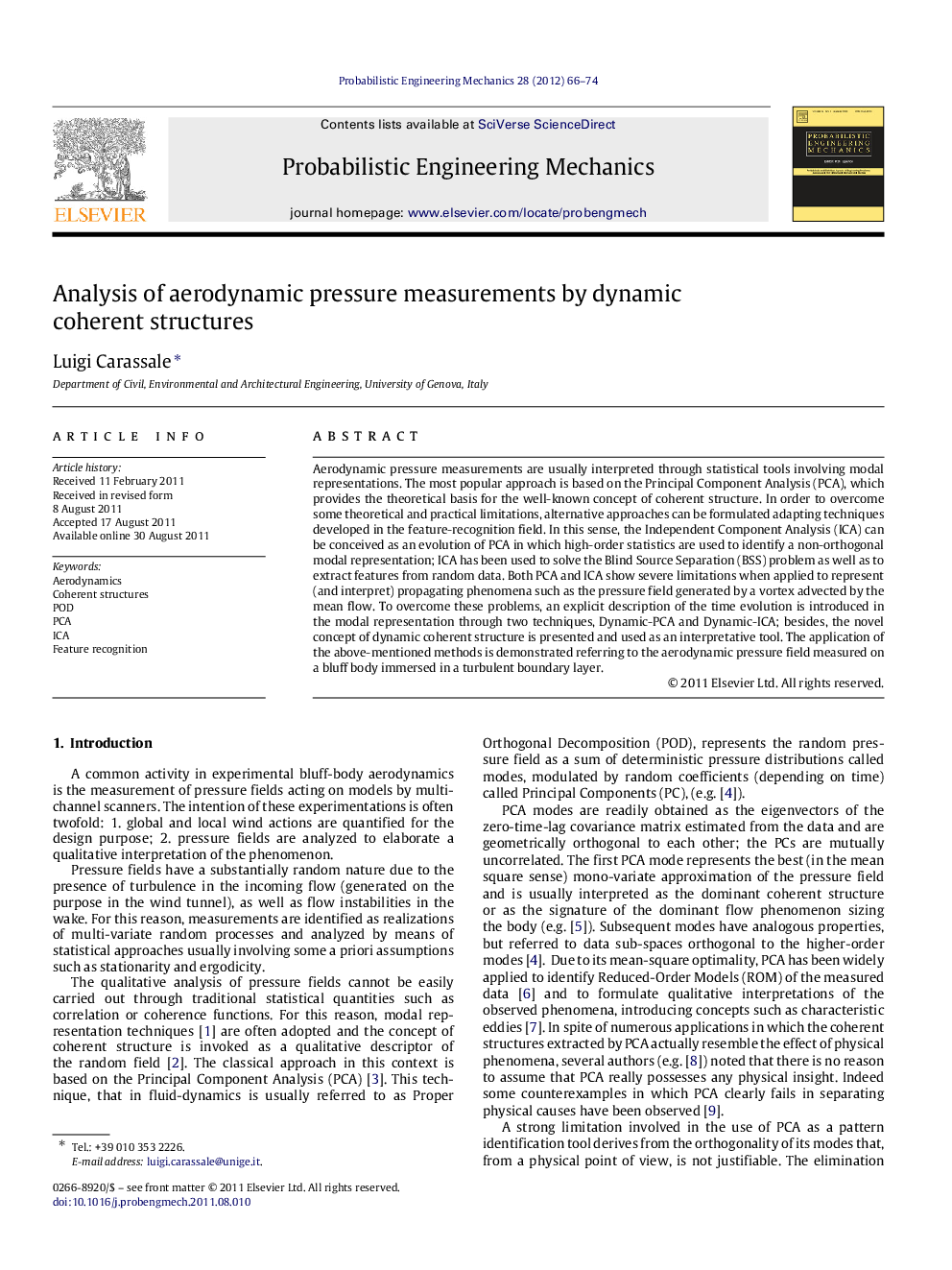| Article ID | Journal | Published Year | Pages | File Type |
|---|---|---|---|---|
| 806119 | Probabilistic Engineering Mechanics | 2012 | 9 Pages |
Aerodynamic pressure measurements are usually interpreted through statistical tools involving modal representations. The most popular approach is based on the Principal Component Analysis (PCA), which provides the theoretical basis for the well-known concept of coherent structure. In order to overcome some theoretical and practical limitations, alternative approaches can be formulated adapting techniques developed in the feature-recognition field. In this sense, the Independent Component Analysis (ICA) can be conceived as an evolution of PCA in which high-order statistics are used to identify a non-orthogonal modal representation; ICA has been used to solve the Blind Source Separation (BSS) problem as well as to extract features from random data. Both PCA and ICA show severe limitations when applied to represent (and interpret) propagating phenomena such as the pressure field generated by a vortex advected by the mean flow. To overcome these problems, an explicit description of the time evolution is introduced in the modal representation through two techniques, Dynamic-PCA and Dynamic-ICA; besides, the novel concept of dynamic coherent structure is presented and used as an interpretative tool. The application of the above-mentioned methods is demonstrated referring to the aerodynamic pressure field measured on a bluff body immersed in a turbulent boundary layer.
► The aerodynamic pressure field on bluff bodies is interpreted through the concept of coherent structure. ► Besides classical PCA, alternative techniques, ICA, and their dynamic generalizations, D-PCA and D-ICA, have been employed. ► ICA demonstrated higher ability that PCA in detecting recurrent configurations. ► Only the dynamic representations, D-PCA and D-ICA, extracted successfully the effects of propagating phenomena. ► The coherent structures extracted by D-ICA resemble recurrent sequences of pressure patterns actually observed.
